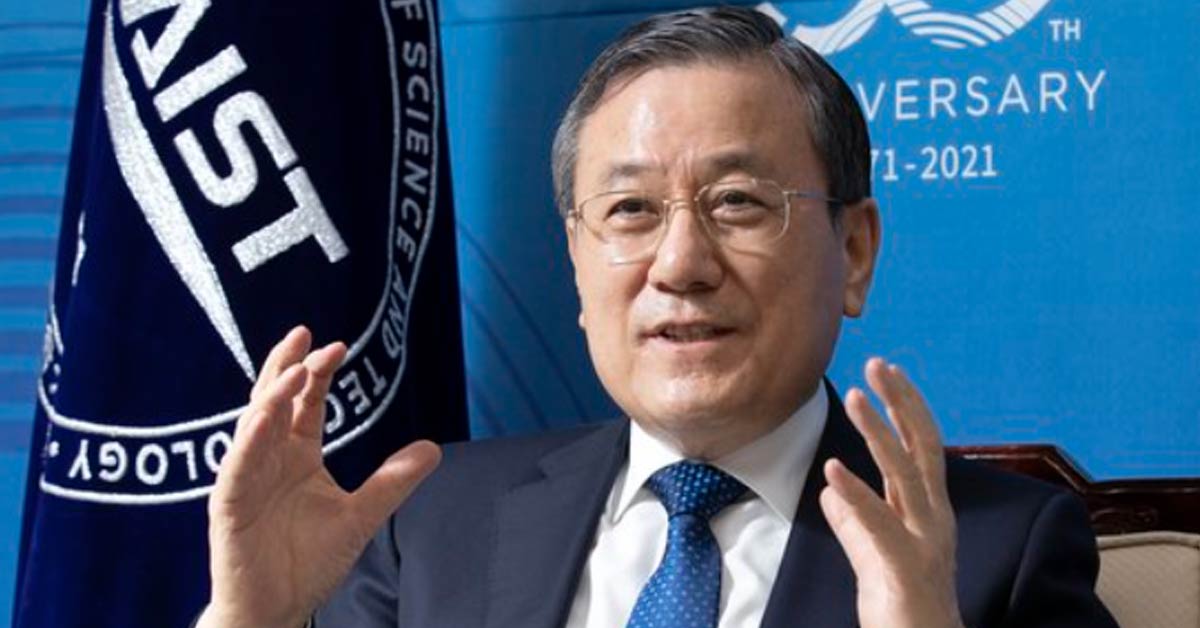
President Shin Seong-cheol is interviewing the JoongAng Ilbo at KAIST Hongneung Campus, Seoul. Reporter Lim Hyun-dong
There are several words that express him in the public. ‘The first alumni president’,’Park Geun-hye’s former elementary school alumni’, and’a person who will pass at once if a personnel hearing is held’ are like wrinkles deeply engraved on the forehead while suffering from Seppa for four years in office. This is the story of Shin Seong-cheol, 69, president of KAIST, who ends his term on the 22nd. He took office as president in February 2017, when the impeachment of President Park was in full swing, and was accused of embezzlement and dismissal for business purposes by the Ministry of Science, Technology and Information at the end of 2018, less than two years ago. When he was the president of the Daegu Gyeongbuk Institute of Science and Technology (DGIST), in the process of joint research with the Lawrence Berkeley National Research Center in the United States, he was improperly executing research funds and illegally involved in hiring disciples. The Daegu District Prosecutor’s Office has been investigating for over a year. However, the conclusion was non-prosecution. The Ministry of Science and ICT, whose new chief and vice minister changed, also gave up the appeal. I recently met Shin at KAIST’s Hongneung Campus in Seoul.
President Shin Seong-cheol suffered an investigation during his tenure
Prosecution of government charges such as embezzlement of research funds
“Researchers related to me are intimidated”
Attracting 200 billion won in fund for 4 years amidst difficulties
- The past four years’ meeting will be unique.
- It wasn’t without heartbreak. It is a pilgrimage. It was a case of accusation that shouldn’t or couldn’t. While doing international joint research with world-class research institutes, I couldn’t do this even though I had a small understanding in using the huge facility. Young researchers related to me have been intimidated and insulted a lot, but I don’t want to go into details. I hope to become a teacher on the other hand for the advancement of science technology and audit system.
- This year marks the 50th anniversary of KAIST. To evaluate the past years.
- I am KAIST’s first alumni president. I entered the master’s degree in 1975. And I spent almost 50 years with KAIST. 50 years ago, Korea was the poorest country with a per capita national income of $300. We are living in the age of 30,000 dollars now. KAIST graduates were behind the remarkable scientific development and economic growth. 25% of the domestic semiconductor leader-level manpower and 20% of science and engineering professors are from KAIST. Currently, there are 1200 start-up companies including Naver and Nexon. Total annual sales amount to 14 trillion won.
- Still, compared to Stanford University in the United States, there is a big difference between startups.
- ‘Hubo’s father’ Professor Oh Joon-ho’s robotic platform company Rainbow Robotics was recently listed on the KOSDAQ. Over the past four years, the university’s start-up institutes have supported 90 professors and students, and the amount of investment amounted to 200 billion won. The technology transfer import fee also exceeded 10 billion won in 2019. Education and research were all the roles of universities in the 20th century. However, in the 21st century, leading universities began to link research to economic added value. Stanford University is the most advanced. The number of founders of graduates exceeded 40,000, and the sales from them are 3,000 trillion won.
- Please tell me the problems of Korean science and engineering university education.
- He is still buried in the research he pursues. It is focusing on short-term research and tasks with high success rates required by the government. The atmosphere should be challenging, creative, and tolerating failure.
- Recently, Bloomberg ranked Korea as the world’s best innovative country.
- Even as an objective indicator, it is true that it has grown tremendously, including the 12th in the world for scientific and technological papers and the 5th in international patents. However, in terms of quality indicators, there is still a long way to go. The world’s leading thesis citation index is ranked 30th, and it is said to be a patent powerhouse, but it is a technology importing country with an annual technology import fee of 4 trillion won. It took 80 years for Japan to receive its first Nobel Prize in Science after the Meiji Restoration. We think that the time will come to bear global fruit in 2030, 10 years from now.
Joonho Choi, Scientific and Future Professional Reporter, Editorial Writer [email protected]
